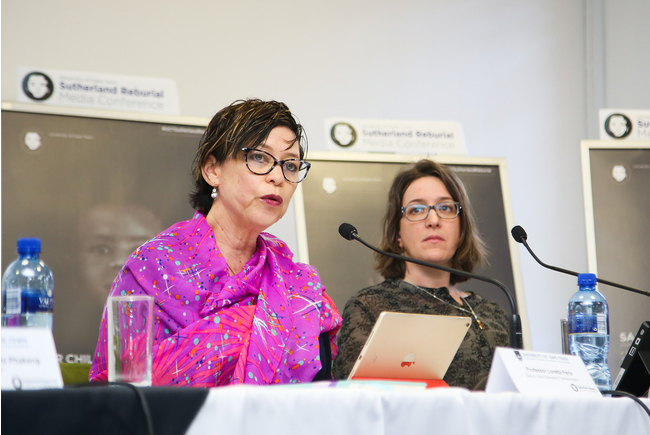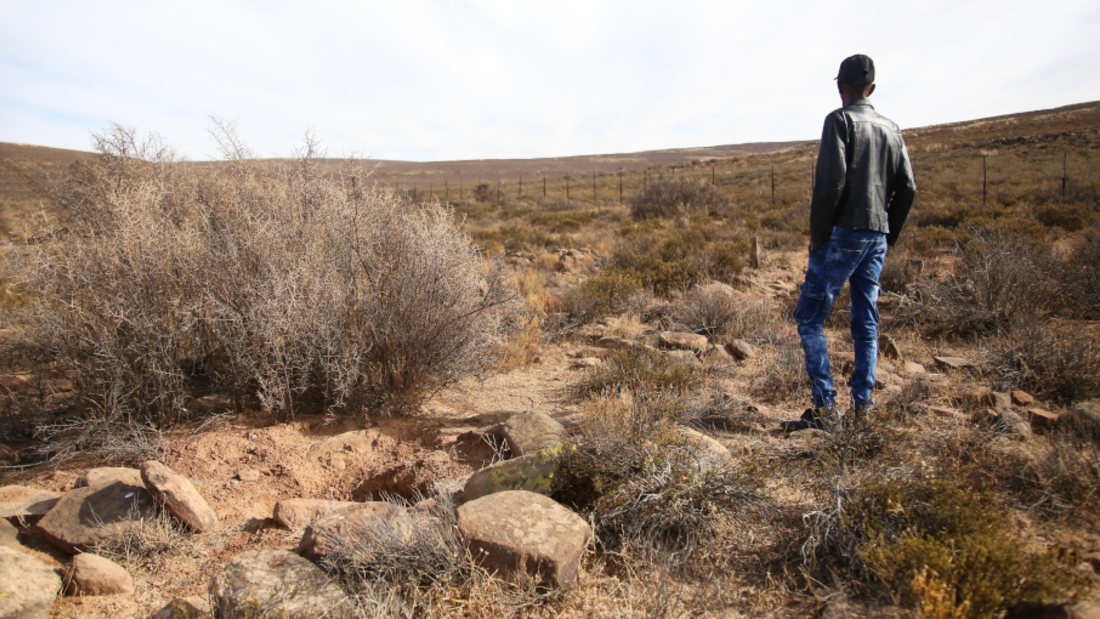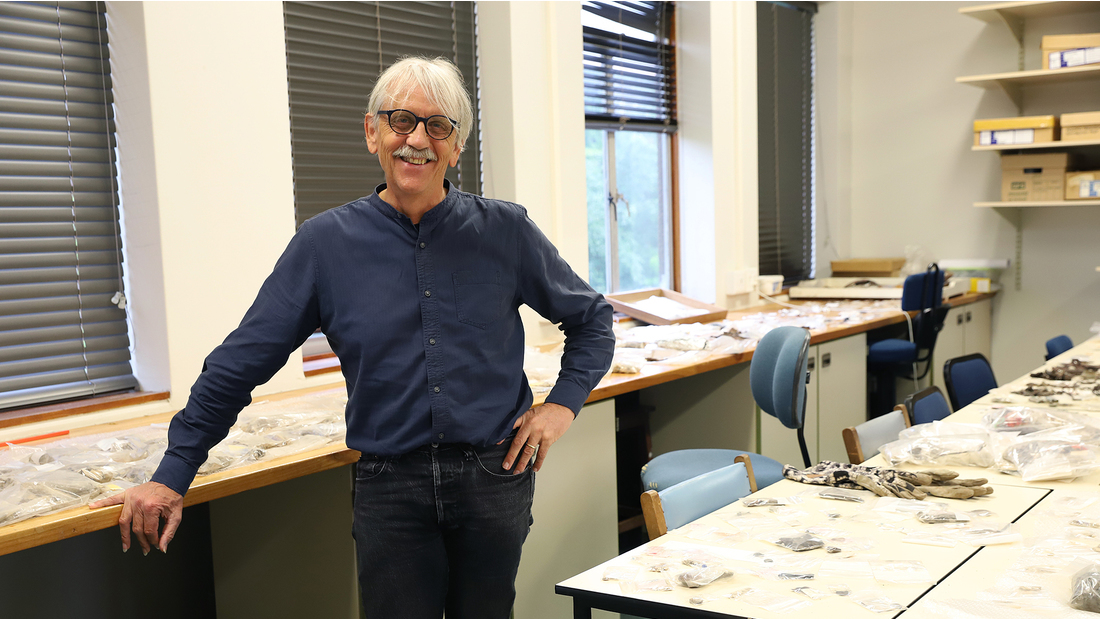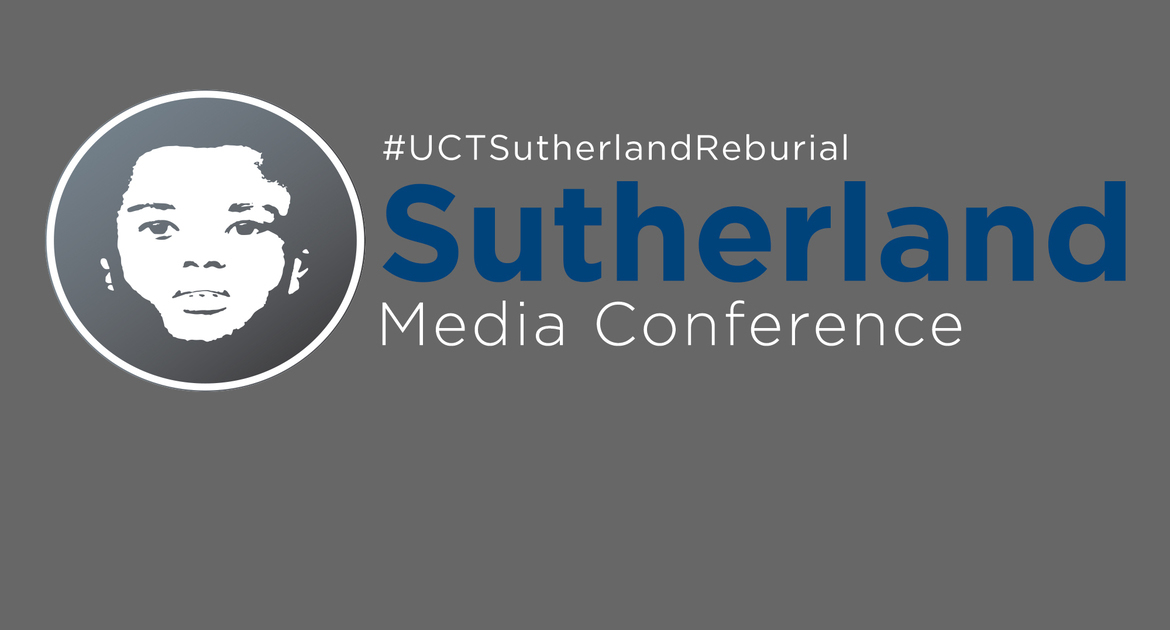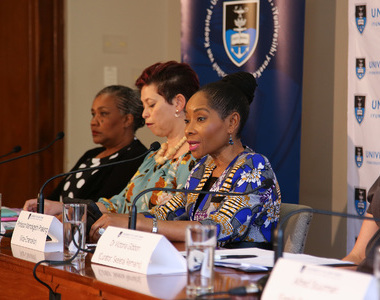Restoring individual and national pride
04 November 2019 | From Kgethi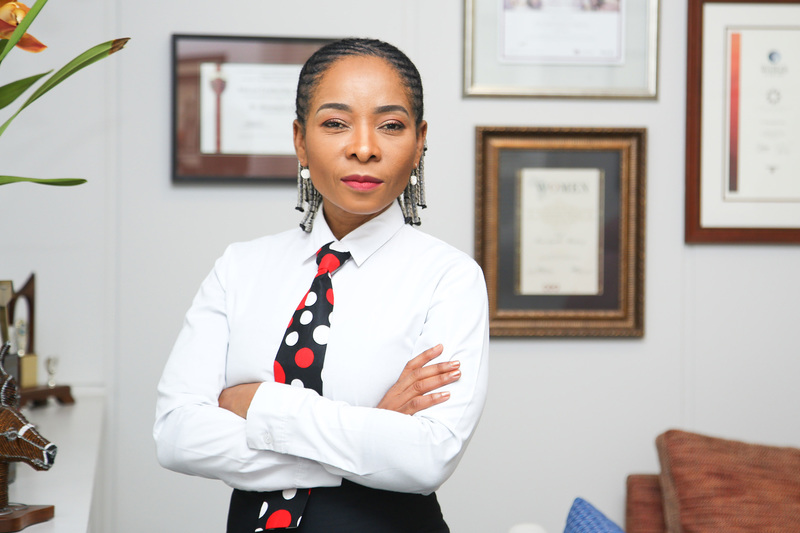
Dear colleagues and students
As you will know from previous reports, during an archiving audit of the university’s skeletal collection in 2017, Dr Victoria Gibbon, the curator of human remains at the University of Cape Town (UCT), identified 11 skeletons that were obtained unethically. Nine of these individuals were brought to the university by a farmer from Sutherland in the Northern Cape in the early 20th century. The available records detail the first names of seven of these individuals and the surnames of two: Abraham and Stuurman.
Deputy Vice-Chancellor for Transformation Professor Loretta Feris and the Office for Inclusivity and Change have led the important process of engaging with the families of these individuals, the Sutherland community and other stakeholders. This was followed by a further process of analysing the remains (at the families’ request) and reconstructing their facial features, with generous sponsorship from the National Geographic Society. I invite you to visit the UCT News feature page that provides details of these activities in videos, photographs and written reports.
In a comprehensive process that could influence national policy on restitution, and set precedents internationally, a team of scientists from across various disciplines worked together to establish the identity of the individuals; reconstruct their faces as they would have appeared at the time of death; provide insights into where they lived, their diet and the conditions in which they lived; determine their gender, height and estimated age; establish any medical conditions they had and the cause of death; and determine their genetic relationships.
The team also conducted a survey of the Kruisrivier farm cemetery where the skeletons had originally been buried, did an in-depth analysis of the disturbed graves, and examined the history of the farm and the Roggeveld area where the farm is located.
This is an important step in reconnecting the Abraham and Stuurman families in Sutherland, as well as the wider Sutherland community, with individuals from their past. The ultimate goal is to return the skeletons to their home community for reburial.
This is also an important process for UCT and our commitment to transformation. These remains give all South Africans a connection to a past that colonialism and apartheid tried to ignore. They provide affirmation that this is African land, our history, our heritage; that our future belongs to us as much as our past. They also show us that South Africans each have their own story, their own heritage, connected by DNA and by the memories that individuals keep alive.
As a people, we need to know who we are, acknowledging our differences as well as our similarities. Family history and heritage were stolen from South Africans, just as land was. This has a direct connection to the issue of home and belonging: no different from the hopes of the people who lived in District Six, and those who live now in Bo-Kaap. These remains are part of every South African’s heritage because their story is that of all South Africans, including those who were brought here as indentured labourers and slaves.
This process sets a precedent for government policy for future reburial and restitution – something the government has not yet developed for the country. It demonstrates the importance of collaboration, involving the Sutherland Abraham and Stuurman families, aided by public participation consultant Doreen Februarie, and the community leaders and government officials who facilitated the exchange sessions. This process also demonstrates the power of academia to help restore national pride, identity and image.
This kind of work is not possible anywhere but at a university, which has the required resources, including committed academic staff to provide the necessary research, access to historical records, high standards of academic rigour to establish the best likelihood for historical accuracy, collaborative relationships across academic disciplines to develop a holistic picture of the persons who left these skeletons, and the ability to collaborate with other universities and with organisations like the National Geographic Society.
On behalf of UCT, I thank everybody who has been involved in this process, including:
- Professor Feris and the Office for Inclusivity and Change for leading this process
- the government stakeholders involved, including the Department of Sports, Arts and Culture; the Office of the Premier of the Northern Cape; the Karoo Hoogland Municipality; and the South African Heritage Resources Agency
- especially the members of the Sutherland Abraham and Stuurman families.
I also wish to acknowledge the role of the five UCT academics on the scientific team: Dr Victoria Gibbon, Professor Simon Hall, Professor Nigel Penn, Dr Tinashe Mutsvangwa and Professor Judith Sealy; as well as the four academics from international institutions. These are Professor Caroline Wilkinson and PhD student Kathryn Smith (Face Lab, Liverpool John Moores University, United Kingdom), and Dr Stephan Schiffels and PhD student Joscha Gertzinger (Max Planck Institute for the Science of Human History, Germany).
In addition, I acknowledge the support offered to this team by nine postgraduate students from UCT.
This process demonstrates that socially responsive research and the mindful application of knowledge can uplift our self-image as a nation and help us find our rightful place in the world.
Sincerely
Professor Mamokgethi Phakeng
Vice-Chancellor
Read previous communications:
 This work is licensed under a Creative Commons Attribution-NoDerivatives 4.0 International License.
This work is licensed under a Creative Commons Attribution-NoDerivatives 4.0 International License.
Please view the republishing articles page for more information.
UCT Sutherland Reburial
After an archiving audit of the UCT Human Skeletal Collection in 2017, the university discovered that it had 11 skeletons in its collection that were unethically obtained by the institution in the 1920s. The university has acknowledged this past injustice, which forms part of its history. Nine of these individuals were brought to the university in the 1920s from Sutherland in the Northern Cape. UCT is working with the community of Sutherland to return the skeletal remains of these nine individuals to their descendants. An interdisciplinary team of academics from UCT and two international partner institutions have conducted unprecedented scientific studies. This process has enabled the university to provide redress and social justice through science.
On 26 November 2023, remains of the nine individuals were reburied in Sutherland. Read the latest news.







